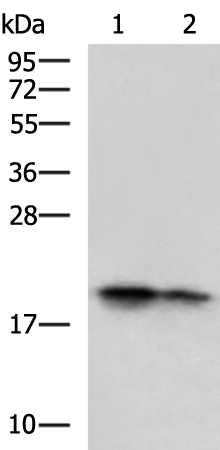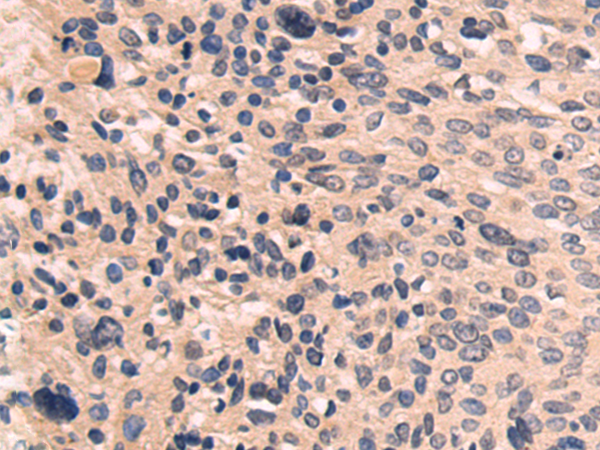

| WB | 咨询技术 | Human,Mouse,Rat |
| IF | 咨询技术 | Human,Mouse,Rat |
| IHC | 1/50-1/200 | Human,Mouse,Rat |
| ICC | 技术咨询 | Human,Mouse,Rat |
| FCM | 咨询技术 | Human,Mouse,Rat |
| Elisa | 1/5000-1/10000 | Human,Mouse,Rat |
| Aliases | SMST; SST1 |
| WB Predicted band size | 13 kDa |
| Host/Isotype | Rabbit IgG |
| Antibody Type | Primary antibody |
| Storage | Store at 4°C short term. Aliquot and store at -20°C long term. Avoid freeze/thaw cycles. |
| Species Reactivity | Human, Mouse, Rat |
| Immunogen | Synthetic peptide of human SST |
| Formulation | Purified antibody in PBS with 0.05% sodium azide and 50% glycerol. |
+ +
以下是关于SST(生长抑素)抗体的3篇文献摘要示例:
1. **《Somatostatin Receptor Antibodies: Novel Diagnostic and Therapeutic Tools》**
**作者:Reubi, J.C.; Maecke, H.R.**
**摘要**:综述了生长抑素受体抗体在肿瘤诊断与靶向治疗中的应用,重点探讨了其在神经内分泌肿瘤显像和受体靶向治疗中的潜力。
2. **《Development of a High-Affinity Antibody for Somatostatin Receptor Subtype 2A (SST2A)》**
**作者:Cescato, R.; et al.**
**摘要**:报道了一种新型SST2A特异性单克隆抗体的开发,通过体外和体内实验验证了其高选择性,并证明其在肿瘤组织免疫组化检测中的有效性。
3. **《Clinical Utility of Radiolabeled SST Antibodies in Neuroendocrine Tumor Imaging》**
**作者:Kvols, L.K.; et al.**
**摘要**:评估了放射性核素标记的SST抗体在神经内分泌肿瘤患者中的显像效果,结果显示其与传统奥曲肽扫描相比具有更高的灵敏度。
(注:以上内容为示例,实际文献需根据具体研究检索确认。)
Somatostatin (SST), a neuropeptide and hormone, is primarily produced by δ-cells in the pancreas, gastrointestinal tract, and neurons in the central nervous system. It exists in two bioactive forms, SST-14 and SST-28. and functions as a key regulator of endocrine and nervous systems. SST inhibits the secretion of multiple hormones, including growth hormone, insulin, glucagon, and gastrin, while modulating neurotransmission and cell proliferation. Its actions are mediated through five G protein-coupled receptors (SSTR1-5), which are widely expressed in target tissues.
SST antibodies are critical tools for detecting and quantifying SST in research and diagnostics. They enable visualization of SST-producing cells via immunohistochemistry (IHC), ELISA, or Western blot, aiding studies on endocrine disorders (e.g., pituitary adenomas, neuroendocrine tumors), neurodegenerative diseases (e.g., Alzheimer’s), and metabolic conditions. In clinical settings, SST analogs and receptor-targeted therapies leverage SST pathways for cancer treatment and diagnostic imaging.
The development of high-specificity SST antibodies has advanced understanding of SST’s dual roles in hormone regulation and pathological processes, supporting both mechanistic research and therapeutic innovation. Challenges remain in optimizing antibody cross-reactivity across species and SST isoforms, ensuring accuracy in diverse experimental models.
×